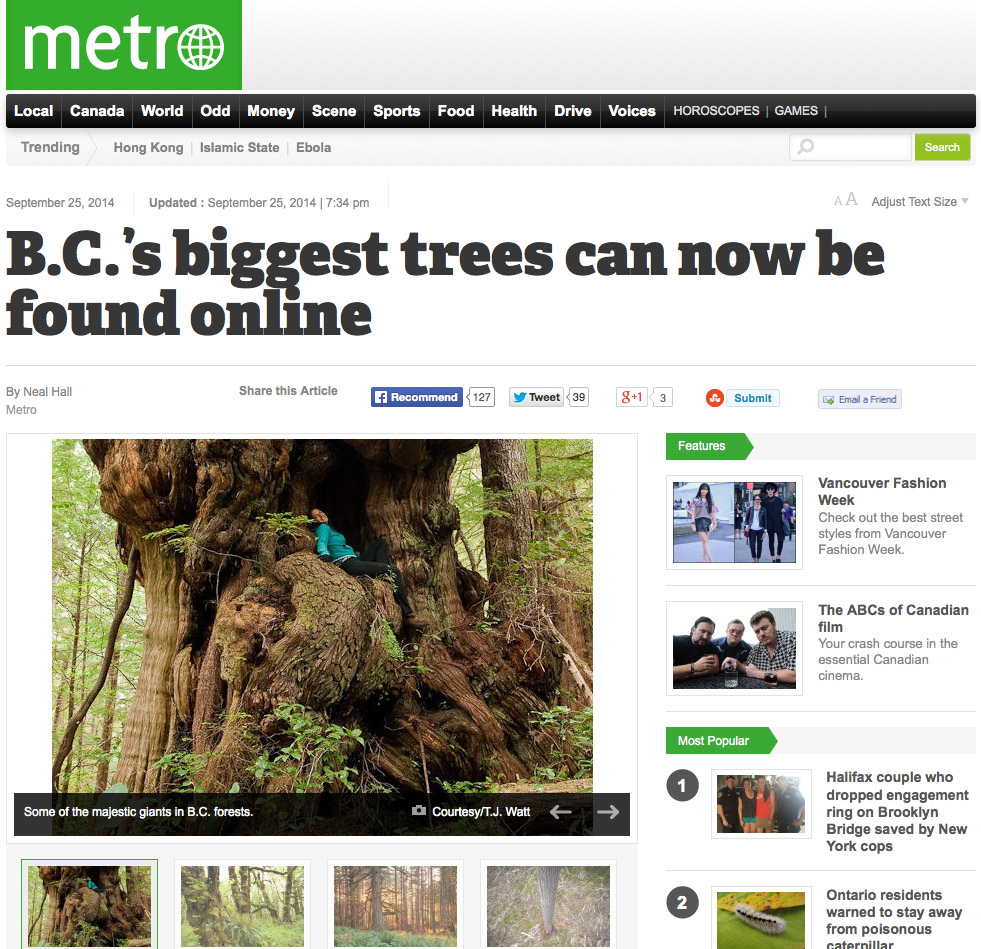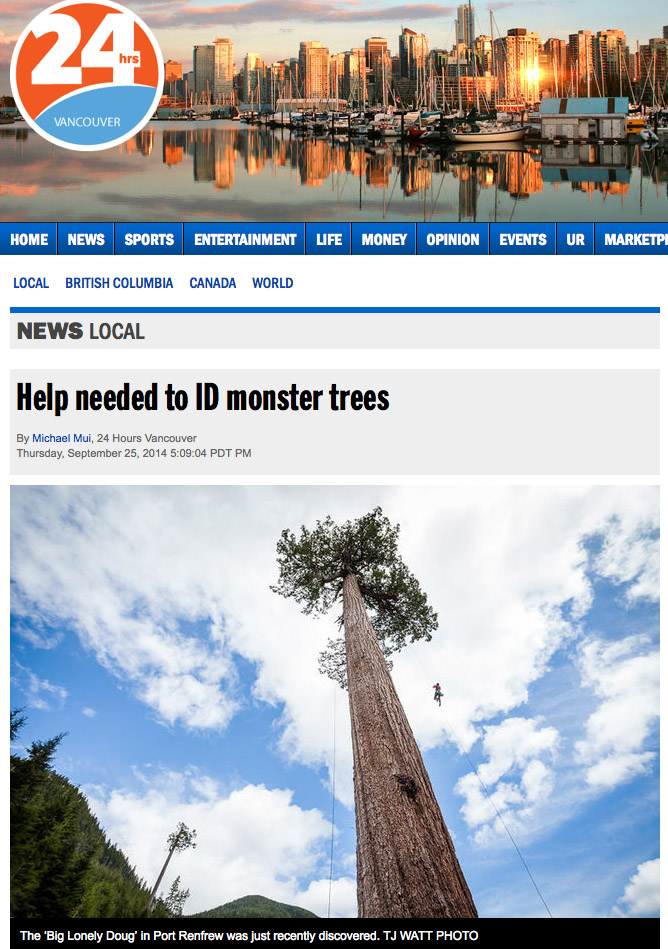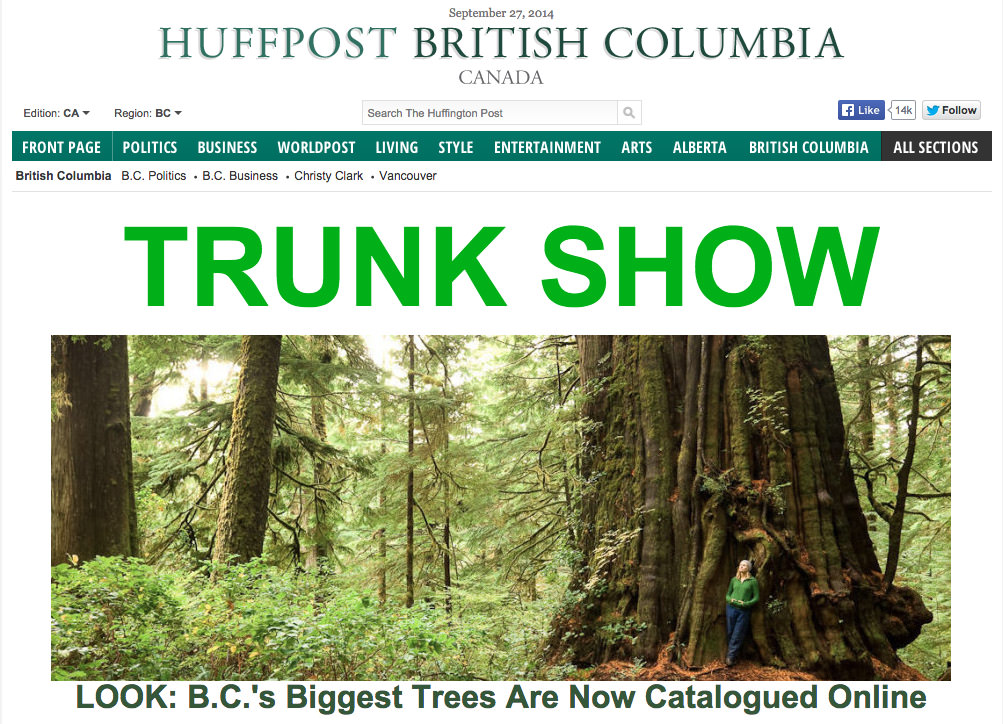It was great to have the opportunity to meet and photograph biologist Stan Orchard for a recent article in Canadian Wildlife magazine. Stan has been working tirelessly to eradicate the invasive American bullfrog from Vancouver Island as it spreads and takes over the habitat of many native species. A lack of government funding and the sheer number of frogs make for a difficult task but Stan has pioneered his own unique and successful method for capturing them. To learn more, grab the issue of Canadian Wildlife or visit Stan's website, Bullfrog Control.
New Old-Growth Logging Images From Port Renfrew Region
Last week I took a long and rough drive up and around the Gordon River Valley and Braden Creek areas near Port Renfrew on southern Vancouver Island. It's been a year or so since I'd driven the same loop and I was curious of what had changed. Sadly, but not to my greatest surprise, many of the old-growth areas I previously spotted were now logged or roaded. The clearcuts continue to extend higher and higher up the steep mountainsides as industry pushes towards the end of this precious resource, leaving barren landscapes and tree plantations in its wake. Here are a few images from my trip.
Blue Heron at Sunrise
I was wide awake this morning so I decided to try and catch sunrise by the ocean in Oak Bay. In the end, the low clouds on the horizon blocked the sun from spreading much color but I did get to share the beautiful view with a blue heron. A great way to start the day :)
The BC Big Tree Registry is Now Online - Submissions Welcomed!
Exciting news! The BC Big Tree Registry, which aims to document the province's largest trees via public submissions, has been re-launched by the UBC Faculty of Forestry online. See their press release here. Any member of the public can become a nominator and make submissions through the online registry here: http://bcbigtree.ca/ More information about the registry and how to properly measure trees can also be found here: http://bigtrees.forestry.ubc.ca/
I just had my first nomination accepted - Big Lonely Doug, Canada's second largest Douglas-fir tree (ID#386), which we sadly came across in a clearcut near Port Renfrew in 2012. I'm excited at the prospect though of nominating many more giant trees as I stumble upon them in the woods now that the submission process has been digitized. In the past, the database was all on paper and only included the top 10 trees for each species, whereas now all forest giants can be cataloged. Though the registry affords the trees no legal protection, it should help to reignite interest in these increasingly rare and exceptional specimens and inspire folks to get out into the woods to find new hidden treasures. A hopeful spinoff from this is raised awareness of the threats still facing our endangered old-growth forests and more pressure on the BC government to protect them from logging - especially in the high productivity areas where the biggest trees are found and the forests are most threatened. See maps here.
The news media did a great job covering the re-launch and all outlets included a selection of my big tree photos in their articles which was cool to see. The Huffington Post ran an huge photo gallery with over 50 of my images!
- Huffington Post - B.C.'s Big Trees Are Now Tracked In UBC's Online Database (PHOTOS)
- Metro News - B.C.’s biggest trees can now be found online
- 24hrs Vancouver - Help needed to ID monster trees
- Global News (Video) - UBC to track B.C.'s largest trees: re-launches database
- UBC News - Big trees bring out our inner tree hugger
With big trees in mind, I encourage everyone to grab their boots, break out their maps, and see what hidden giants they can find in their neck of the woods. Remember to always leave a trip plan with a responsible friend and pack the necessary first aid & outdoor survival equipment. Happy tree hunting!
You just never know what you might find when exploring. I came across this giant burly western redcedar tree while on a solo bushwhack in the Gordon River Valley outside of Port Renfrew on Vancouver Island in 2012.
Forest Flare
Playing around with tight crops of lens flare in the forest. There's a surreal and magical feel to them - like a spirit in the woods :)
McLaughlin Ridge - Alberni Valley News
Here's a cover photo of mine in the Alberni Valley News, highlighting recent logging by Island Timberlands on McLaughlin Ridge; an old-growth forest of high ecological value near Port Alberni. Click here to read the article. The area was originally intended for protection by the provincial government as an Ungulate Winter Range (UWR) and Wildlife Habitat Area (WHA), until the province’s plans changed when it removed the lands from Tree Farm Licence 44. The removal of the lands in 2004 included the stipulation from the BC government that a follow-up agreement be developed between the company and the government to ensure the protection of McLaughlin Ridge and other intended UWR’s and WHA’s - however, both parties failed to pursue the agreement, and the lands are now being logged. A conservation solution for these lands is needed before it's too late.
See more of my photos of logging on McLaughlin Ridge from that trip here: http://on.fb.me/1qeaXhn
Bronze in 'Trees' - Prix de la Photographie, Paris (Px3) 2014
My photo of an old-growth Douglas-fir tree in the Avatar Grove has been awarded Bronze in the professional 'Trees' category of Prix de la Photographie, Paris (Px3) 2014, "Europe's biggest and most prestigious photography competition". The effect of the photo was achieved by zooming the lens out during a slow exposure in order to capture, what I feel, is the magic of being in these ancient forests.
Honorable Mention in the Big Picture: Natural World Photography Competition
I am quite honored to learn that my image of woman sitting within a giant western redcedar stump in the Klanawa Valley has received an Honorable Mention in the 'Conservation Imagery' category of the 2014 Big Picture: Natural World Photography Competition hosted by the California Academy of Sciences. The contest, which saw 6,300 submissions and included judges from the iLCP, will spotlight the work of professional conservation photographers from 12 countries around the globe. The exhibition runs from August 1 - November 2, 2014 at the California Academy of Sciences in San Fransisco, one of the largest natural history museums in the world. It's truly exciting for me every time an image from a remote area gets the chance to reach such a large audience. I love the old-growth forests of the Klanawa, where this stump was found, but they're disappearing at an alarming rate each year. Hopefully with this we move another inch closer to seeing them saved. For those curious, below is map showing the exact location of the stump on southwestern Vancouver Island.













